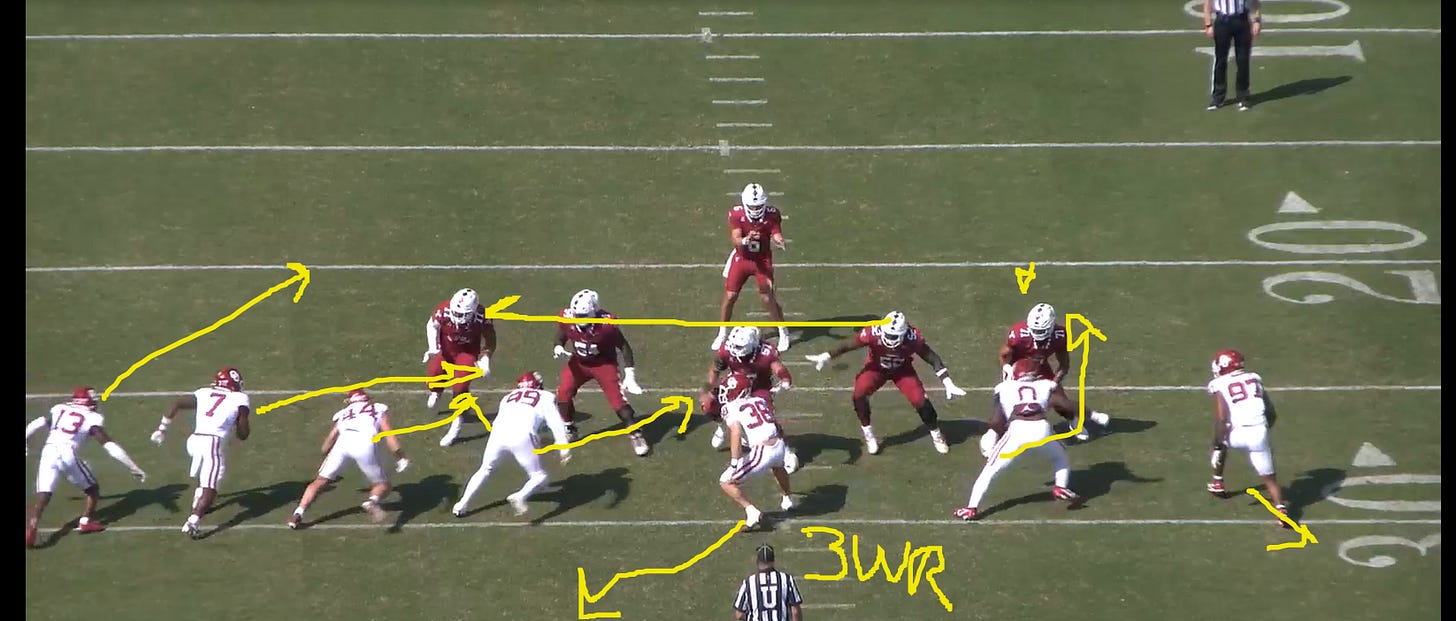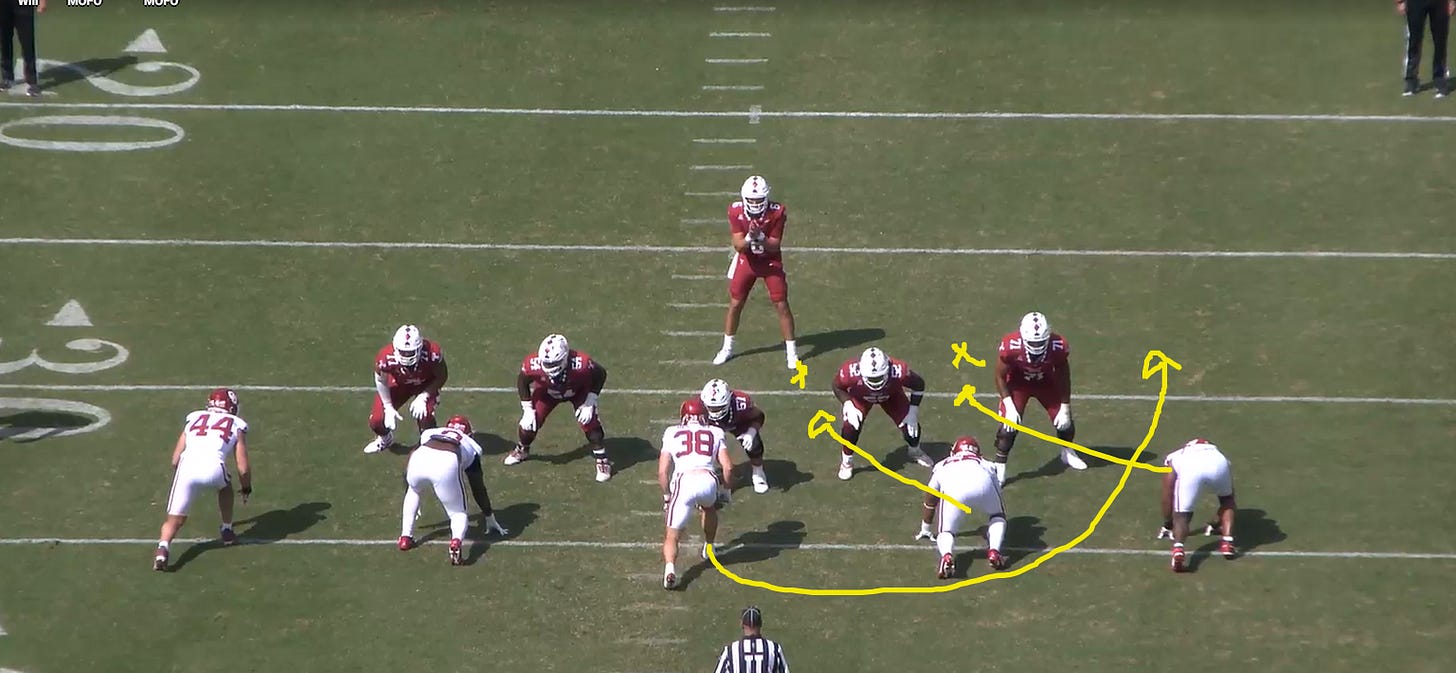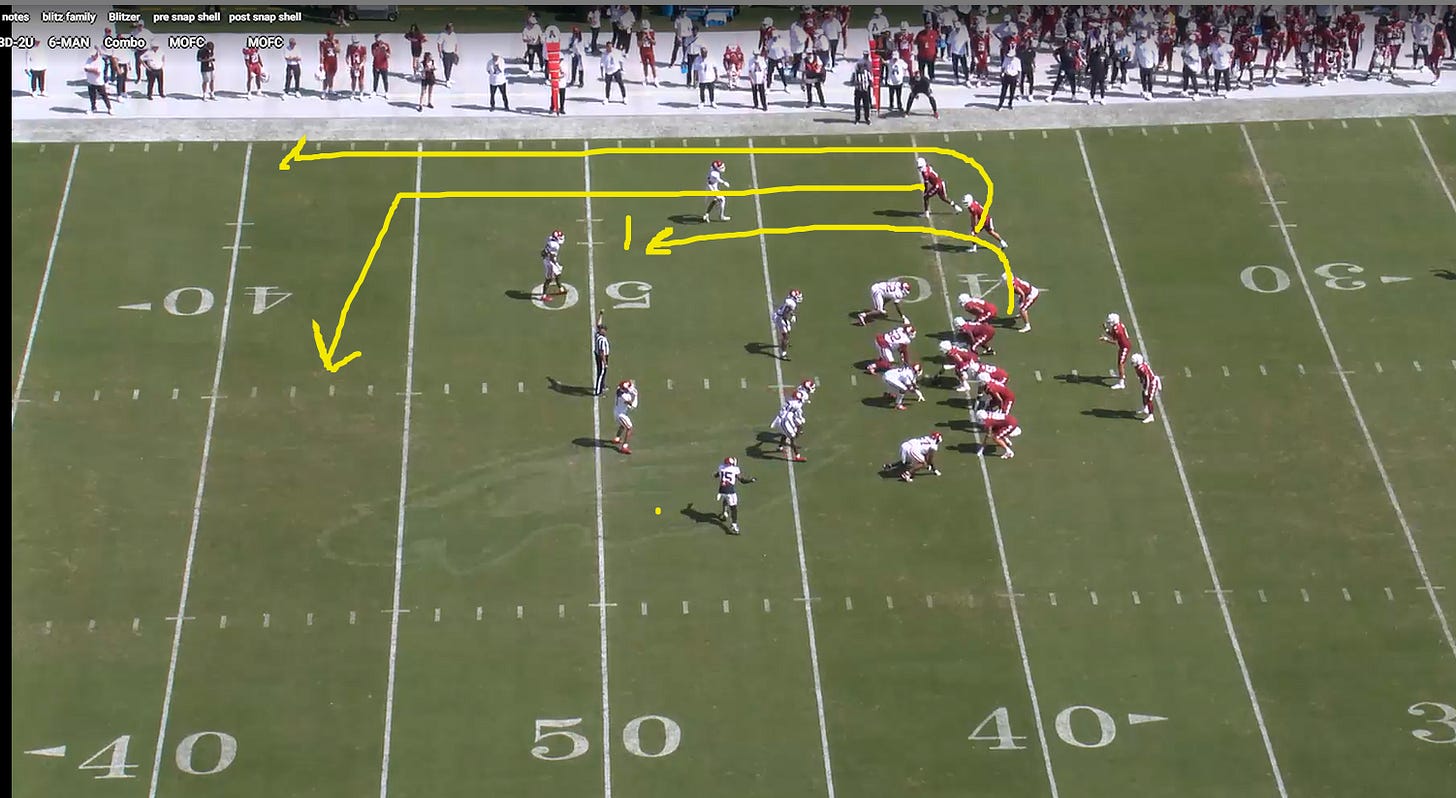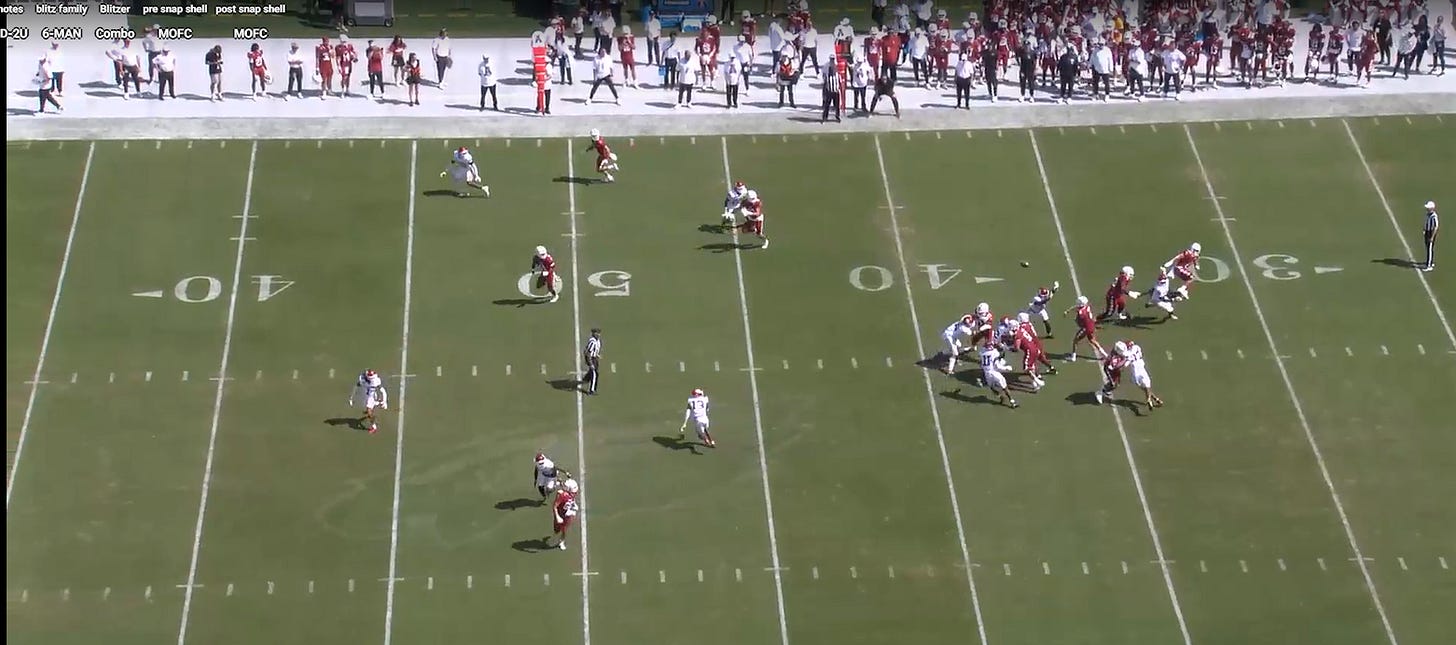We started looking at this defense through three weeks, and before conference play begins it is worth talking about the cost of living in attack mode.
Bud Wilkinson said it best: “When you come up on defense, do not even think about playing off the blocker. Come so fast and with so much determination to get the ball that your speed and aggressiveness carry you through the blocker.”
Bill Belichick’s counterpoint lives in my head too: “We try to make the offense play left-handed.”
That is the essence of great defense. You cap what the offense does best, accept what you can live with, and force the game onto your terms.
3rd and 6 — Coverage: NTT — Pressure: five-man from an even front — “Wide Over - Load ON W-Mug.”
Temple slides the protection and leaves one-on-one to the boundary. With the Will walked up (mugged), there is a lot for the OL to sort out:
Cheetah: Powers - Knife
Mike (Sammy) on the line
Hein at a wide 9
Strong in a 4i
Heinecke mugged over the center takes the 3WR
Stone in a 4i - works his one v one
MJJr at a 9 - Zone’s off into RPO Windo
There is a ton of information for an OL to decipher from pre-snap language. Plenty of protection ID cues for Brent to find weaknesses. The mug front forces a declaration from the protection. If they slide away from the LT, you get the matchups you want to the boundary and you can create the free hitter. Watching this game back the RG for Temple really struggled all game long. Brent was relentless in attacking him.
3rd and 11 — Coverage: Cover 3 “w/ Tampa Rotation” — Even front — “Split W-Mug” (split 3s).
Pirate stunt is another example of “safe” pressure that still disrupts RPO that will be translatable for the entire year in conference play.
Edge (Hein) drops to the single-WR side as the curl/flat defender and matches out.
IDL (Stone) replaces the dropping edge from the 3.
Halton and MJJr run the Pirate (end spikes, tackle loops) to pin the OL and create a looper. Halton and MJJr calls for cancelling/pin gap outside in.
*Unless* Protection fans. Temple made a good call to cancel this pressure.
Heinecke times it up clean — he is a natural blitzer — and runs free. Even with MJJr slipping, if the QB hitches the ball, the hit is coming.
Temple fans protection, which lets MJJr knife inside. The play itself is modest, but the tool translates to conference play: simulated pressure that gets the ball out and still protects you on the back end.
Why it matters: the W-Mug look forces the offense to show its hand. Slide one way and you expose the other. From there you can layer knife blitzes, loops, and replacement pressures to create free runners.
What changes in conference play
Better quarterbacks. Better game plans. Expect the raw blitz rate to come down. The trade-off of a pressure lifestyle is real: you must pick your moments, pick your coverage (zone, man, or match), and ID protection rules so the free runner actually appears.
What likely becomes the core:
Replacement pressures (creepers and simulated) on early and neutral downs. four rushing, seven in coverage, change the picture without giving up explosives.
Selective five and six man calls with man or match behind them when it is time to end a drive.
Less spot-drop zone, more pattern-match to squeeze windows. We’ll take a look at that next.
Clip 21 (teaching tape when it does not hit)
Even front, wide — six man pressure with Fire Zone — Center-read stunt, combo plug.
Temple answers with a Trail concept with Peel — classic zone beater. The blitz does not get home and the route finds grass. That is the trade-off on film: if the ball is out on rhythm and you are in zone behind a big pressure, the offense can steal one.
Safety makes a baseball turn and the curl flat defender does not match the trail. That leaves space, and if the quarterback has time it is a big play waiting to happen. You cannot give Jackson Arnold these freebies.
Bottom line
Relentless pressure is a weapon, but picking your spots to tee off is the key in conference play. You are trading volume for select, high-leverage punches as the opponents get better. Dictate the slide with the mug preasures and other pre-snap language, lean on creepers and sims to stay sound on the back end, then unleash the heavier stuff when the sticks say it is time to hunt. That is how you keep the speed and aggression Wilkinson preached all those years ago.
If this added value, please share our free newsletter with one friend. That is how this community/tailgate grows.
Thank you for riding with us.
Boomer!
Rob





